May 21, 2025 | 08:43 GMT +7
May 21, 2025 | 08:43 GMT +7
Hotline: 0913.378.918
May 21, 2025 | 08:43 GMT +7
Hotline: 0913.378.918
More than 10 years ago, by chance during a party in Ben Tre province, Mr Kha discovered this sapoche variety. After trying it, feeling the delicious taste as well as the potential for growth in his garden, he boldly ordered 25 seedlings to test plant on 1,000m2.
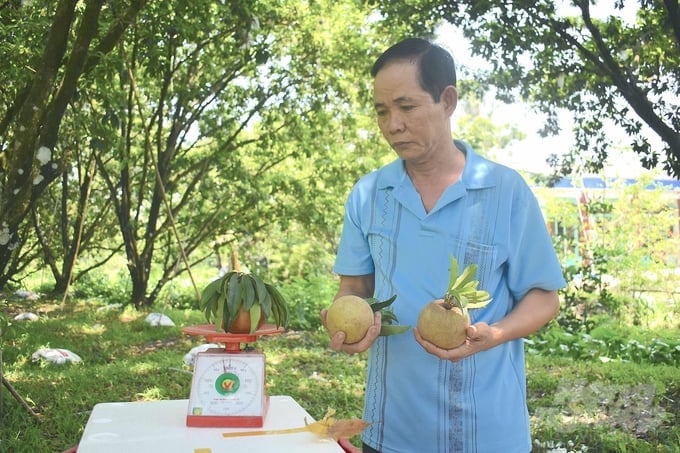
Mr Tran Van Kha pioneered planting Mexican sapoche varieties in Song Thuan commune, Chau Thanh district, Tien Giang province. Photo: Minh Dam.
After 3 years of care, the tree has begun to bear fruit, but it is not until the 5th year that it produces much yield, an average of about 50 - 60kg/tree. The older the tree, the higher the yield. Mexican Sapoche is easy to grow, has few pests and diseases, and upkeep costs are only 50% compared to regular sapoche varieties.
This variety of sapoche produces very large fruits, weighing from 250 - 700g, round, soft, with bran-like skin, very sweet and long-lasting aroma, the deliciousness is considered the most outstanding among all types of sapoche. Therefore, over the past 10 years, Mexican sapoches have been purchased by traders at prices ranging from VND 55,000 - 60,000/kg, 2 - 3 times higher than jam sapoches - a native sapoche variety.
Realizing the economic efficiency of this sapoche variety, Mr Kha decided to expand the area, planting about 150 more trees on 7,000 square meters, of which 5,000 square meters produced stable fruit.
Currently, Mr Kha's sapoche trees are over 10 years old, yielding up to 200 kg/tree and generating an income of VND 300 million/year. Particularly for the 5,000m2 of expanded planting that is bearing fruit, Mr Kha's family earns nearly VND 400 million each year.
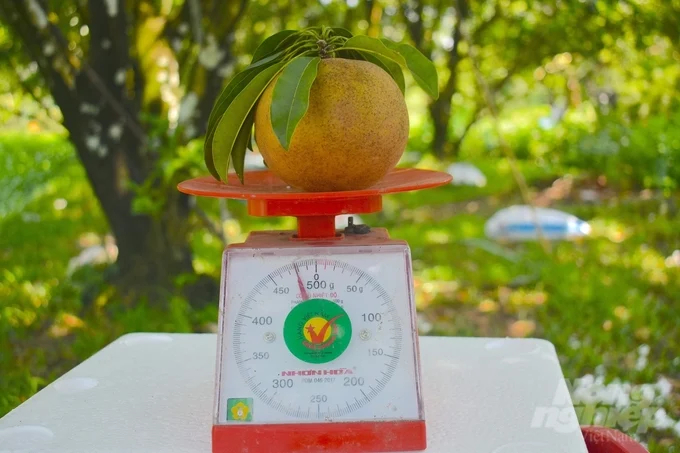
Mexican sapoches are very large, weighing an average of 400g. Photo: Minh Dam.
Talking about effective Mexican sapoche planting techniques, Mr Kha shared: In order for the tree to grow well, it is necessary to build a high, dry dune with good drainage. When first planted, it is necessary to water sapoches with growth stimulants to nourish healthy roots. After that, we just apply normal chemical and organic fertilizers according to the age of the tree. During the business period, it is necessary to apply adequate chemical and organic fertilizers for plants to grow sustainably. Each year, about 7kg of chemical fertilizer and 20kg of organic fertilizer are needed for each root. In each period of young shoots, flowering, and fruiting, it is necessary to guard against pests and mealybugs.
Sapoche is one of the crops that can withstand drought and salinity very well compared to many other crops. According to the Department of Agriculture and Rural Development of Tien Giang province, along with coconut, tamarind and grapes, sapoche is a group of trees that are resistant to salinity, and able to withstand salinity concentrations of 5‰ - 6‰.
To prevent saltwater intrusion for sapoche trees, Mr. Kha said that during the dry season, ditches must be dredged to prepare water and irrigate economically, cover the base with straw, grass, and coconut shells to prevent water evaporation and heat for the tree.

Water sparingly for sapoches in the dry season. Photo: Minh Dam.
Song Thuan commune, Chau Thanh district (Tien Giang) has nearly 520 ha of agricultural land, people grow mainly sapoche and coconut trees. Ms Nguyen Thi Hoang Yen, Vice Chairwoman of Song Thuan Commune People's Committee commented: Mr Tran Van Kha's Mexican sapoche planting model is one of the models for converting production to new plant varieties that bring quite high efficiency. It is being studied and replicated by local people in an area of about 5 ha.
Currently, the price of type I Mexican sapoche is VND 60,000/kg, and the price for the small type is VND 18,000/kg. The effectiveness of this sapoche planting model is 3 times higher than that of regular sapoche. In addition to harvesting fruit every year, Mr Kha also branches sapoche to sell about 1,000 branches/year, bringing his family an income of several hundred million VND/year.
Sapoche is one of the famous crops in communes along the Tien River of Tien Giang province, especially in localities such as Kim Son, Phu Phong, and Song Thuan with an estimated area of about 1,500 ha. The Mexican sapoche variety will contribute to diversifying crop varieties for local people when choosing to develop their agricultural economy. Mr. Tran Van Kha's model is being widely replicated by local people.
Translated by Hoang Duy
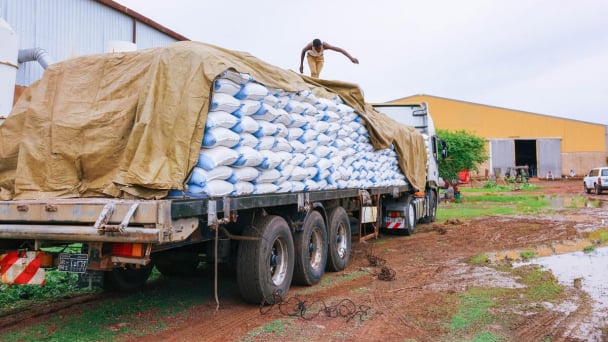
(VAN) In 2024, over 295 million people across 53 countries and territories faced acute hunger—an increase of almost 14 million people compared to 2023, while the number of people facing catastrophic levels of hunger reached a record high.

(VAN) World Environment Day 2025 (June 5) carries the theme 'Beat Plastic Pollution' continuing to emphasize the global urgency of addressing the plastic waste crisis.
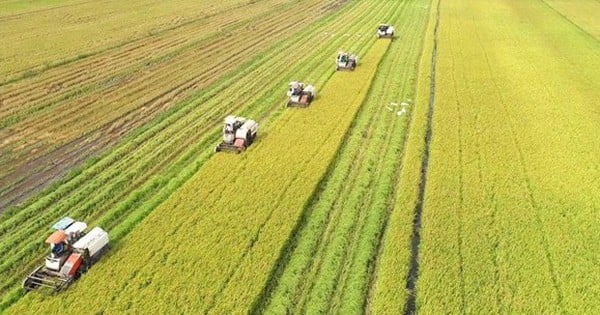
(VAN) This was the assessment shared by experts at the workshop titled 'Assessing the Role and Potential of Low-Emission Rice Production Systems in Vietnam,' held on the morning of May 19.

(VAN) Cai Rong Port is the fisheries control center of Quang Ninh, helping to monitor fishing vessels, combat IUU fishing, and remove the EC's 'yellow card'.
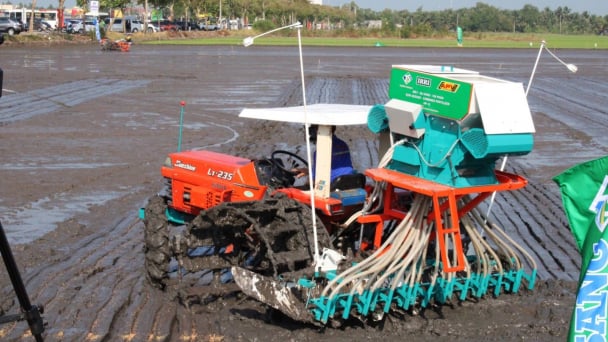
(VAN) The German Agricultural Society (DLG) explores the possibility of establishing a mechanization service center in Vietnam’s Mekong Delta to support farmers in accessing and utilizing advanced machinery.

(VAN) On May 16, the Department of Water Resources Management, in collaboration with the Food and Agriculture Organization of the United Nations (FAO), held a signing ceremony for the GEF-8 project document.

(VAN) Food safety, mechanization, vocational training, and market opening are key areas of cooperation expected between the Vietnamese Government and the Federal Republic of Germany.